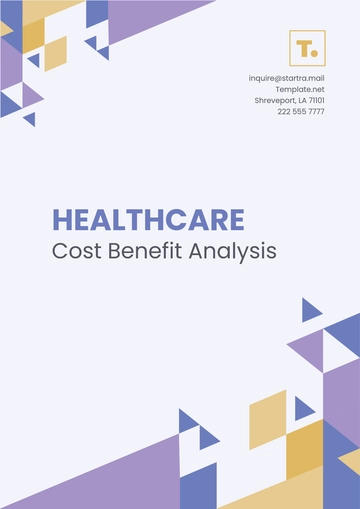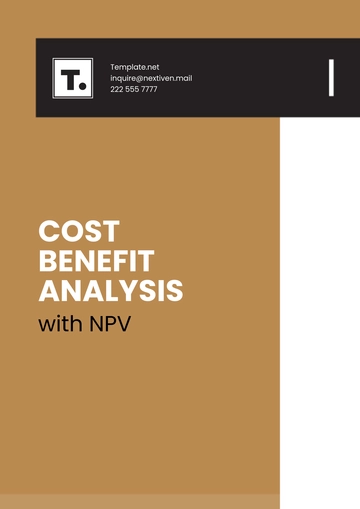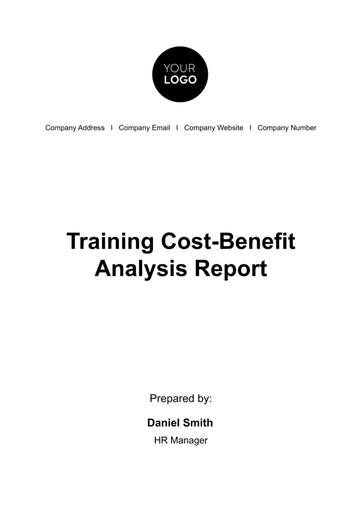Free Hotel Financial Analysis

I. Executive Summary
A. Overview of the Hotel
The [Your Company Name], nestled in the heart of [City, Country], stands out as a beacon of luxury and sophistication with its [000] exquisitely appointed rooms and suites, offering guests an unparalleled experience of comfort and style. Renowned for its exceptional service and attention to detail, the hotel has become a preferred choice for discerning travelers seeking a memorable stay in [City]. Its prime location, coupled with a unique blend of modern amenities and timeless elegance, sets it apart in the competitive hospitality landscape of the region.
B. Summary of Financial Performance
Amidst the challenges posed by the global pandemic, the hotel has demonstrated resilience and adaptability, achieving total revenue of $[0] million in the past year. Despite fluctuations in demand and market conditions, the hotel has maintained a strong net profit margin of [0]%, a testament to its efficient cost management and strategic revenue optimization efforts. Key performance indicators such as occupancy rate and average daily rate have remained robust, reflecting the hotel's ability to attract guests and generate revenue even in uncertain times.
C. Key Findings and Recommendations
While the hotel has performed admirably in navigating the complexities of the current economic climate, there are areas for further improvement and growth. Strategic marketing initiatives aimed at expanding market reach and enhancing brand visibility can drive revenue growth and capture new market segments. Additionally, investing in technology solutions to streamline operations and enhance guest experiences can yield long-term benefits, ensuring sustained competitiveness and profitability in the evolving hospitality landscape.
II. Introduction
A. Purpose and Scope of the Analysis
This comprehensive financial analysis aims to provide a holistic assessment of the hotel's financial performance over the past year, offering valuable insights into revenue generation, expense management, and overall profitability. By analyzing key financial metrics and industry benchmarks, the analysis seeks to identify opportunities for optimization and strategic decision-making to drive future growth and success.
B. Methodology Used
The analysis is grounded in a rigorous methodology that combines a thorough review of the hotel's financial statements with industry research and market analysis. Financial data from the income statement, balance sheet, and cash flow statement are meticulously examined to gain a deep understanding of the hotel's financial health and performance drivers. Additionally, benchmarking against industry peers and market trends provides valuable context and benchmarks for evaluating the hotel's performance and identifying areas for improvement.
III. Financial Performance Overview
A. Revenue Analysis
Total Revenue Breakdown
The hotel's revenue streams encompass various sources, with room revenue accounting for the largest share, followed by food and beverage, spa services, and other ancillary revenue streams. This diversified revenue portfolio contributes to the hotel's overall financial stability and resilience to market fluctuations.
Revenue Category | Amount (USD) |
|---|---|
Room Revenue | $[0] million |
Food and Beverage | $[0] million |
Spa Services | $[0] million |
Other Revenue Streams | $[0] million |
Revenue Trends Over Time
Analysis of revenue trends over the past year reveals patterns influenced by seasonal demand, promotional activities, and external factors such as travel restrictions. Understanding these trends is crucial for devising revenue management strategies and optimizing revenue generation opportunities.
B. Expense Analysis
Total Expenses Breakdown
Operating expenses, including labor costs, utilities, marketing, and administrative expenses, constitute the bulk of the hotel's expenditures. By dissecting these expenses, the analysis aims to identify areas of inefficiency and potential cost-saving measures to improve overall profitability.
Expense Category | Amount (USD) |
|---|---|
Labor Costs | $[0] million |
Utilities | $[0] million |
Marketing | $[0] million |
Administrative | $[0] million |
Expense Trends Over Time
Examining expense trends provides insights into cost fluctuations and cost drivers, allowing for proactive management of expenses to ensure alignment with revenue growth objectives and operational efficiency goals.
C. Profitability Analysis
Gross Profit Margin
The gross profit margin indicates the hotel's ability to generate revenue after accounting for the direct costs associated with providing goods and services. Maintaining a healthy gross profit margin is essential for covering fixed costs and generating profits.
Net Profit Margin
The net profit margin reflects the hotel's profitability after accounting for all operating expenses and taxes. A high net profit margin signifies efficient cost management and strong revenue generation, indicating financial health and sustainability.
D. Key Performance Indicators (KPIs)
Occupancy Rate
The occupancy rate measures the percentage of available rooms that are occupied over a specific period. It is a fundamental KPI for assessing demand and revenue potential, guiding pricing and marketing strategies to maximize occupancy levels.
Average Daily Rate (ADR)
ADR represents the average revenue earned per occupied room in a given period, providing insights into pricing strategies and revenue optimization efforts.
Revenue per Available Room (RevPAR)
RevPAR is a key metric calculated by dividing total room revenue by the total number of available rooms. It is a comprehensive indicator of hotel performance, reflecting both occupancy and pricing dynamics.
Other Relevant KPIs
Additional KPIs such as revenue mix, customer satisfaction scores, and repeat guest rates offer further insights into the hotel's performance and guest loyalty.
IV. Revenue Analysis
A. Room Revenue
Occupancy Rate Analysis
The occupancy rate fluctuates seasonally and is influenced by factors such as tourism trends, business travel demand, and promotional activities. Analyzing occupancy trends helps identify peak periods and opportunities for revenue optimization through dynamic pricing strategies.
ADR Analysis
The average daily rate varies based on room category, seasonality, and market demand. By segmenting ADR data and comparing it with competitors, the hotel can assess its pricing competitiveness and implement targeted pricing strategies to maximize revenue.
RevPAR Analysis
RevPAR reflects the combined impact of occupancy and ADR on revenue generation. Monitoring RevPAR trends provides insights into overall revenue performance and helps evaluate the effectiveness of revenue management strategies.
B. Food and Beverage Revenue
Restaurant Revenue Analysis
Revenue from the hotel's restaurants is influenced by menu offerings, pricing strategies, and guest preferences. Analyzing sales data by meal periods and menu items can identify popular dishes and revenue-generating opportunities.
Bar/Lounge Revenue Analysis
Bar and lounge revenue is affected by beverage selection, promotional events, and guest traffic. Evaluating sales trends and profit margins helps optimize inventory management and pricing strategies to maximize profitability.
C. Other Revenue Streams
Spa Revenue Analysis
Spa revenue is driven by service offerings, appointment bookings, and guest satisfaction. Analyzing spa utilization rates and treatment preferences can inform marketing initiatives and service enhancements to attract more guests and increase revenue.
Conference/Event Revenue Analysis
Revenue from conferences and events depends on venue facilities, booking rates, and event planning services. Assessing demand trends and event package offerings helps capitalize on revenue opportunities and optimize event space utilization.
V. Expense Analysis
A. Operating Expenses
Cost of Goods Sold (COGS)
COGS for food and beverage includes raw material costs, while COGS for rooms encompasses housekeeping supplies and amenities. Analyzing COGS ratios and vendor contracts helps negotiate favorable terms and control expenses.
Labor Costs
Labor costs constitute a significant portion of operating expenses and vary based on staffing levels and wage rates. Implementing labor management tools and scheduling efficiencies can optimize staffing levels and reduce labor costs without compromising service quality.
Utilities and Maintenance Expenses
Utilities and maintenance expenses include electricity, water, and routine maintenance costs. Implementing energy-saving initiatives and preventive maintenance programs can lower utility bills and extend the lifespan of hotel assets.
B. Non-Operating Expenses
Marketing and Advertising Expenses
Marketing expenses encompass digital marketing campaigns, print advertisements, and promotional events. Analyzing marketing ROI and allocating resources to high-impact channels helps maximize brand exposure and guest acquisition.
Administrative Expenses
Administrative expenses include overhead costs such as salaries, office supplies, and professional services fees. Implementing cost-saving measures such as outsourcing non-core functions and streamlining administrative processes can reduce overhead expenses and improve profitability.
VI. Profitability Analysis
A. Gross Profit Analysis
The gross profit analysis assesses the profitability of revenue streams after deducting direct costs. Analyzing gross profit margins for each revenue category helps identify high-margin products/services and areas for cost optimization.
B. Net Profit Analysis
The net profit analysis evaluates the hotel's overall profitability after accounting for all operating and non-operating expenses. Comparing net profit margins with industry benchmarks and historical performance provides insights into financial health and long-term sustainability.
C. Profitability Trends Over Time
Analyzing profitability trends over time helps identify patterns and anomalies that may impact financial performance. Monitoring profit margins and return on investment (ROI) metrics facilitates proactive decision-making and adjustments to strategic priorities.
D. Comparison with Industry Benchmarks
Benchmarking profitability metrics against industry peers and competitors provides context for evaluating performance and setting realistic goals. Identifying performance gaps and best practices from top performers guides strategic initiatives to improve competitiveness and profitability.
VII. Financial Ratios Analysis
A. Liquidity Ratios
Liquidity ratios such as the current ratio and quick ratio measure the hotel's ability to meet short-term financial obligations. Analyzing liquidity ratios helps assess the hotel's financial stability and ability to withstand economic downturns or unexpected expenses.
B. Solvency Ratios
Solvency ratios, including debt-to-equity ratio and interest coverage ratio, evaluate the hotel's long-term financial health and ability to meet debt obligations. Monitoring solvency ratios helps identify potential liquidity risks and informs capital structure decisions.
C. Efficiency Ratios
Efficiency ratios like asset turnover and inventory turnover measure the hotel's operational efficiency and asset utilization. Improving efficiency ratios through inventory management and operational enhancements maximizes resource utilization and enhances profitability.
D. Interpretation and Implications
Interpreting financial ratios in the context of industry benchmarks and historical trends provides insights into the hotel's financial performance and operational efficiency. Identifying areas of strength and weakness enables targeted interventions to improve financial health and maximize shareholder value.
VIII. Forecasting and Projections
A. Revenue Forecast
Forecasting revenue streams based on historical trends, market demand projections, and upcoming events helps anticipate revenue fluctuations and plan resource allocation accordingly. Utilizing revenue management techniques and demand forecasting models enhances accuracy and supports strategic decision-making.
B. Expense Forecast
Projecting expenses based on anticipated business volumes, inflationary pressures, and planned initiatives enables proactive cost management and budgetary control. Implementing expense forecasting tools and variance analysis techniques facilitates decision-making and performance monitoring.
C. Profitability Projections
Forecasting profitability metrics such as gross profit margin and net profit margin provides visibility into future financial performance and helps set realistic performance targets. Sensitivity analysis and scenario planning enable the assessment of potential risks and opportunities, guiding strategic planning and risk mitigation efforts.
D. Sensitivity Analysis
Conducting sensitivity analysis on key revenue and expense drivers helps quantify the impact of external factors on financial performance. Identifying sensitivity thresholds and risk factors informs contingency planning and strategic decision-making to mitigate adverse effects on profitability.
IX. Recommendations
A. Revenue Enhancement Strategies
Implement targeted marketing campaigns to attract new market segments and drive direct bookings.
Enhance guest experience through personalized services, loyalty programs, and experiential offerings.
Optimize revenue management practices to capitalize on demand fluctuations and maximize yield.
Expand distribution channels and partnerships to reach untapped markets and increase market share.
B. Expense Reduction Strategies
Implement cost-saving initiatives such as energy-efficient technologies and waste reduction programs.
Negotiate favorable vendor contracts and streamline procurement processes to lower COGS.
Optimize labor scheduling and cross-training to improve productivity and reduce labor costs.
Leverage technology solutions for process automation and efficiency gains across operations.
C. Operational Improvements
Enhance operational efficiency through workflow optimization and performance monitoring.
Invest in staff training and development programs to improve service quality and guest satisfaction.
Implement sustainable practices and green initiatives to reduce environmental impact and operating costs.
Foster a culture of innovation and continuous improvement to drive operational excellence and guest loyalty.
D. Investment Opportunities
Explore opportunities for property renovations, upgrades, or expansions to enhance guest experience and competitiveness.
Evaluate potential acquisitions or partnerships to diversify revenue streams and expand market reach.
Invest in technology solutions for data analytics, revenue management, and guest engagement to drive operational efficiency and revenue growth.
Consider strategic investments in marketing and branding initiatives to strengthen the hotel's positioning and market share.
X. Conclusion
A. Summary of Key Insights
The hotel's financial analysis reveals strengths in revenue diversification, operational efficiency, and profitability.
Opportunities for improvement include revenue optimization, cost containment, and strategic investments in technology and guest experience.
By implementing the recommended strategies and capitalizing on emerging trends, the hotel can enhance its financial performance and competitive position in the market.
B. Future Outlook
Despite ongoing challenges and uncertainties, the hotel is well-positioned to capitalize on opportunities for growth and innovation.
By leveraging its strengths and embracing change, the hotel can adapt to evolving market dynamics and emerge stronger and more resilient.
With a strategic focus on revenue enhancement, cost efficiency, and operational excellence, the hotel is poised for continued success and sustainable growth in the years ahead.
- 100% Customizable, free editor
- Access 1 Million+ Templates, photo’s & graphics
- Download or share as a template
- Click and replace photos, graphics, text, backgrounds
- Resize, crop, AI write & more
- Access advanced editor
Improve your hotel's financial performance with ease using the Hotel Financial Analysis Template from Template.net. This editable and customizable template offers a comprehensive framework for assessing revenue, expenses, and profitability. With the AI Editor Tool, effortlessly tailor the analysis to your hotel's unique needs and gain valuable insights to optimize operations and maximize profitability.





























